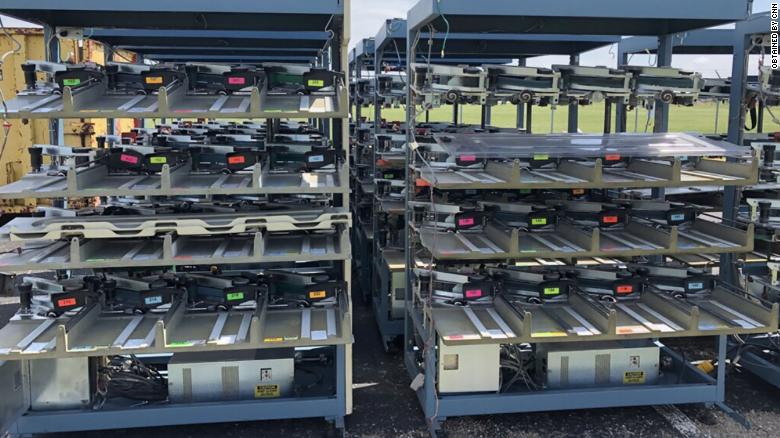By Paul P. Murphy and Curt Devine, CNN
Sun August 16, 2020

United States Postal Service trucks are parked at a postal facility in Chicago on August 15, 2019.
(CNN)The potential effectiveness of an order issued Sunday to stop the removal of United States Postal Service sorting machines is now in question.
Internal USPS planning documents obtained by CNN indicate nearly 95% of the mail sorting machines that had been set for removal during the last few months were already scheduled to be taken out of service by now.
White House chief of staff Mark Meadows told CNN's Jake Tapper on "State of the Union" that the USPS would not remove any more mail sorting machines until after the election.
Amid criticism, USPS says it will stop removing collection boxes for 90 days
Documents from June, obtained by CNN, show the USPS planned to remove 502 DBCS (Delivery Barcode Sorter) machines, or 13.2% of its total inventory by September 30. These machines make up the bulk of the USPS mail sort operation. They sort envelope mail, which would include ballots en route to voters. However, nearly 95%, or 475, of those were scheduled to be removed by the end of July according to documents.
It's unclear how many machines the USPS has actually removed at this point. CNN has reached out to the USPS to confirm if this plan was followed and what the current number of these machines is nationwide. However, union officials across the US have confirmed to CNN that a number of these machines, and other mail sorting machines, have been removed or are in the process of removal.
Meanwhile, CNN has obtained photos from a source with knowledge of the machines' removal showing a disassembled DBCS machine. The majority of the machine is being scrapped; part of it will remain in use by the USPS.
CNN has previously reported that union officials had said the destination of each removed machine varies. Some are scrapped entirely while some are transferred to other facilities.

Meanwhile, CNN has obtained photos from a source with knowledge of the machines' removal showing a disassembled DBCS machine. The majority of the machine is being scrapped; part of it will remain in use by the USPS.
CNN has previously reported that union officials had said the destination of each removed machine varies. Some are scrapped entirely while some are transferred to other facilities.

No comments:
Post a Comment